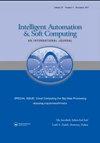Face Recognition System Using Deep Belief Network and Particle Swarm Optimization
IF 2
4区 计算机科学
Q2 Computer Science
引用次数: 1
Abstract
Facial expression for different emotional feelings makes it interesting for researchers to develop recognition techniques. Facial expression is the outcome of emotions they feel, behavioral acts, and the physiological condition of one’s mind. In the world of computer visions and algorithms, precise facial recognition is tough. In predicting the expression of a face, machine learning/artificial intelligence plays a significant role. The deep learning techniques are widely used in more challenging real-world problems which are highly encouraged in facial emotional analysis. In this article, we use three phases for facial expression recognition techniques. The principal component analysis-based dimensionality reduction techniques are used with Eigen face value for edge detection. Then the feature extraction is performed using swarm intelligence-based grey wolf with particle swarm optimization techniques. The neural network is highly used in deep learning techniques for classification. Here we use a deep belief network (DBN) for classifying the recognized image. The proposed method’s results are assessed using the most comprehensive facial expression datasets, including RAF-DB, AffecteNet, and Cohn-Kanade (CK+). This developed approach improves existing methods with the maximum accuracy of 94.82%, 95.34%, 98.82%, and 97.82% on the test RAF-DB, AFfectNet, CK+, and FED-RO datasets respectively.基于深度信念网络和粒子群优化的人脸识别系统
不同情绪的面部表情使得识别技术的开发成为研究人员关注的焦点。面部表情是他们所感受到的情绪、行为和心理状态的结果。在计算机视觉和算法的世界里,精确的面部识别是困难的。在预测面部表情方面,机器学习/人工智能扮演着重要的角色。深度学习技术被广泛应用于更具挑战性的现实问题,在面部情绪分析中受到高度鼓励。在这篇文章中,我们使用三个阶段的面部表情识别技术。采用基于主成分分析的降维技术,结合特征面值进行边缘检测。然后利用基于群体智能的灰狼粒子群优化技术进行特征提取。神经网络在分类的深度学习技术中被广泛使用。在这里,我们使用深度信念网络(DBN)对识别图像进行分类。使用最全面的面部表情数据集(包括RAF-DB、AffecteNet和Cohn-Kanade (CK+))对所提出方法的结果进行了评估。该方法改进了现有方法,在RAF-DB、AFfectNet、CK+和FED-RO测试数据集上的最高准确率分别为94.82%、95.34%、98.82%和97.82%。
本文章由计算机程序翻译,如有差异,请以英文原文为准。
求助全文
约1分钟内获得全文
求助全文
来源期刊

Intelligent Automation and Soft Computing
工程技术-计算机:人工智能
CiteScore
3.50
自引率
10.00%
发文量
429
审稿时长
10.8 months
期刊介绍:
An International Journal seeks to provide a common forum for the dissemination of accurate results about the world of intelligent automation, artificial intelligence, computer science, control, intelligent data science, modeling and systems engineering. It is intended that the articles published in the journal will encompass both the short and the long term effects of soft computing and other related fields such as robotics, control, computer, vision, speech recognition, pattern recognition, data mining, big data, data analytics, machine intelligence, cyber security and deep learning. It further hopes it will address the existing and emerging relationships between automation, systems engineering, system of systems engineering and soft computing. The journal will publish original and survey papers on artificial intelligence, intelligent automation and computer engineering with an emphasis on current and potential applications of soft computing. It will have a broad interest in all engineering disciplines, computer science, and related technological fields such as medicine, biology operations research, technology management, agriculture and information technology.
 求助内容:
求助内容: 应助结果提醒方式:
应助结果提醒方式:


